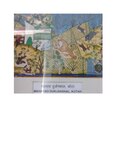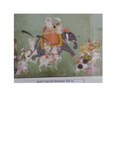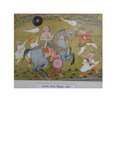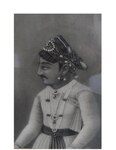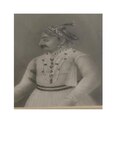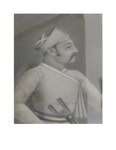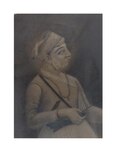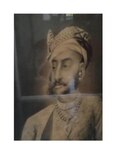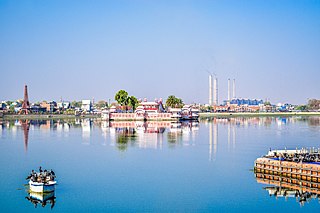
Kota, previously known as Kotah, is third-largest city in the southeast of the northern Indian state of Rajasthan. It is located about 240 kilometres (149 mi) south of the state capital, Jaipur, situated on the banks of Chambal River. With a population of over 1.2 million, it is the third most populous city of Rajasthan after Jaipur and Jodhpur, 46th most populous city of India and 53rd most populous urban agglomeration of India. It serves as the administrative headquarters for Kota district and Kota division. It is popular among the youth of India for its coaching institutes for engineering and medical entrance examinations. Many students come to Kota to prepare for the JEE, NEET and many other competitive exams, making it an Edtech city.

The Kingdom of Amber, later the Kingdom of Jaipur or the Jaipur State, was located in the north-eastern historic Dhundhar region of Rajputana and was ruled by the Kachwaha Rajput clan. It was established by Dulha Rai, possibly the last ruler of the Kachchhapaghata dynasty of Gwalior who migrated to Dausa and started his kingdom there with the support of Chahamanas of Shakambhari in the 12th century. Mostly through 12th to 15th century, the kingdom faced stagnation, sources were scarce. Under its ruler, Raja Chandrasen of Amber became a Sisodia vassal and fought in the Battle of Khanwa under Raja Prithviraj Kachhwaha.
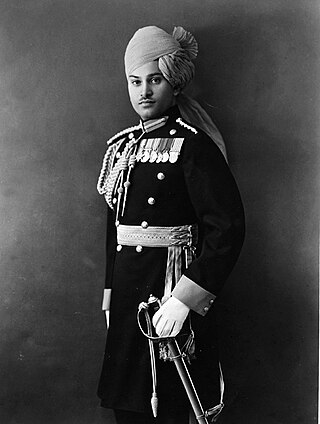
Rao Raja Hanut Singh was a British Indian Army soldier and polo player.
Lieutenant Colonel Apji Dalel Singh was a member of the Constituent Assembly of India. He hails from Thikana "Palaitha", a premier principality of the erstwhile Kotah State in Rajasthan. He represented Kotah state in the Constituent Assembly of India from 1946 to 1950.

Colonel HH Maharajadhiraj Shri Maharaja Mahim Mahendra Maharao Raja Sir Umaid Singh II was the 18th Hada Chauhan ruler of the Princely State of Kotah from the year 1889 to 1940.

Brigadier HH Shri Maharajadhiraj Maharaja Mahim Mahendra Maharao Raja Sir Bhim Singh II Bahadur, KCSI was the last ruling Maharaja of the Hada Chauhan dynasty of the Princely State of Kotah from the year 1940 to 1947.

Maharao Chatra Sal or Shatru Sal (1632–1658) was one of the most prominent and illustrious ruler of Hada-Chauhan dynasty of the Kingdom of Bundi. He built the temple of Keshavrao at Kishorai-Patan and Chatra Mahal in the upper storey of Taragarh Fort,Bundi.

Jhalawar State was a Princely State in India during the British Raj. It was located in the south eastern historic Hadoti region of Rajputana .The main town in the state was Jhalawar.

Bundi State, founded by Hada Rao Devda, was a princely state in India. The former state was located in modern-day Rajasthan. It was ruled by Hada Chauhan Rajputs.
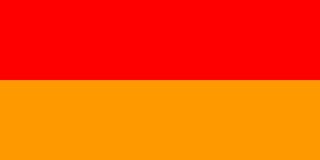
Bikaner State was a princely state in the Rajputana from 1465 to 1947. The founder of the state, Rao Bika, was the eldest son of Rao Jodha, ruler of Jodhpur. Rao Bika chose to build his own kingdom instead of inheriting his father's. Bika defeated the Jat clans of Jangladesh along with his uncle Rao Kandhal and his adviser Vikramji Rajpurohit and founded his own kingdom. Its capital was the city of Bikaner in the northern area of present-day Rajasthan State in India. Karni Mata has been designated as the kuldevi of the royal family of Bikaner.
Events in the year 1707 in India.

The State of Shahpura or Princely State of Shahpura was a princely state in Shahpura, Bhilwara during the era of British India. Its relations with the British were managed by the Rajputana Agency. The last ruler of Shahpura signed the accession to join the Indian Union in 1949.
Brijraj Singh was an Indian politician and a titular ruler as Maharao of Kotah from 1991 until his death.

The Umed Bhawan Palace in the outskirts of Kota, Rajasthan is a former residence of the Maharadja of Kota. Nowadays, the palace is partly converted into a heritage hotel. The palace is surrounded by a large park.

The City Palace or Garh, known locally as the "Garh Palace" is a fortified palace located in the heart of Kota, Rajasthan. It was the former residence of the Raos and Maharaos of the Kingdom of Kota. The Garh is home to a vast heritage collection of canons, paintings, armour, palaces, instruments, attire, manuscripts, murals, and buildings, some of which date back to the 13th century. The Rao Madho Singh Museum occupies the ground floor of the palace building.







